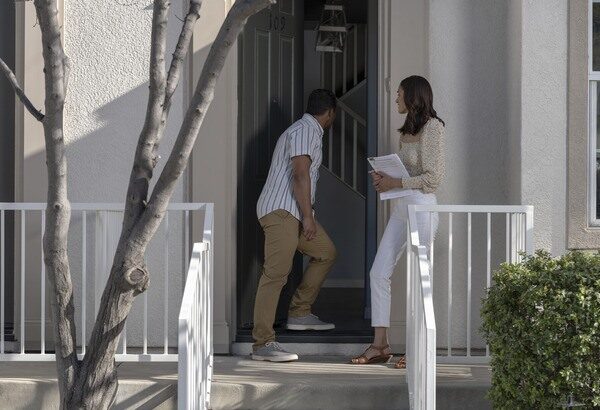
The swimming pool: sometimes the homeowner’s crown jewel, other times a liability that presents little more than an attractive nuisance. A pool’s upkeep can be taxing if not executed properly, and the consequences of poor pool maintenance are ruinous to your bank account and personal health alike. But if you know how to take care of a pool, it can be a wonderful addition to any home, providing recreation, beauty, and a boost in home value.1
Maintaining your pool properly benefits the health of your pool, your family and friends, and your wallet. Though the payoffs to proper pool maintenance are widespread, the demands on you to provide this maintenance are quite simple.2 Here are seven ways you can maintain a safe, well-functioning pool.
1. Chlorinate the water
Proper chlorination is one of the most fundamental examples of how to keep your pool healthy. Chlorine sanitizes the water and prevents the spread of harmful germs and bacteria.3 It also prevents the growth of various algae that discolor pool water and create unpleasant swimming conditions. A safe level of 1-3 parts chlorine per one million parts water (1-3 ppm) is considered more than sufficient to prevent any microbial growth. All pool owners need to apply chlorine manually based on the pool’s volume, which most pool suppliers will provide.4
Pool owners can alternatively use a saltwater system to achieve the same effect. These systems utilize chemical reactions to effectively create the same chlorine other pools use but derived from salt through electrolysis.5
2. Regularly test the pool water
Water chemistry goes beyond chlorination. By regularly testing your pool water, you can monitor for other potentially damaging factors such as:
- Alkalinity: Alkaline levels that are too high or low result in cloudy water. The recommended alkalinity in a swimming pool is 80-120 ppm.
- pH: A pH imbalance can cause pool equipment to corrode and invites the risk of algae growth. It is recommended that your pool water measure out between 7.4-7.6 on the pH scale.
- Chlorine: You should read your pool’s instruction manual on proper levels of chlorine. Too much can damage swimmers’ skin, while too little allows bacteria and other microbes to grow. The recommended level is typically 1-3 ppm.6
- Calcium hardness: Too much or too little calcium hardness can damage pool liner and cause calcium deposits. Recommended calcium hardness is 200-400 ppm.7
- Phosphates: Phosphates, simply put, are organic chemicals that enter the pool in everything from human sweat to leaves. A very small amount (100-125 ppm)8 can help soften pool water, though in larger quantities it leads to algae blooms and water discoloration.9
DIY pool test kits do a fine job of monitoring water chemicals and should be used on a weekly basis to ensure the water remains safe.
3. When to shock the pool
Shocking your pool is a common example of how to treat pool water when it becomes chemically imbalanced. To shock the pool means to add additional
chlorine or non-chlorine pool chemicals to destroy any algae, bacteria, or chloramines (which form when chlorine mixes with nitrogen from contaminants like sweat).10 Pool shocking is often implemented after a heavy storm, an algae outbreak, or heavy use. In short, any time it is likely that the chemical balance in your pool water has shifted.
4. Run the pool pump
The pool pump is your pool’s filtration system and primary means of water circulation. Pool water must be able to circulate to evenly distribute chemicals. To achieve this circulation and filter out bacteria and debris, your pool pump must be run approximately eight hours a day.11
5. Clean the pool filter
When cleaning your pool filter, it’s important to make sure you know what kind you have.
Sand filters must be cleaned when the pool water begins to get cloudy or if PSI reaches over normal operating levels. Sand in the filter should be cleaned with a high-pressure hose and treated chemically at least twice a year.
Cartridge filters, which use a cloth-like material to filter water instead of sand, need only be removed and sprayed down with a high-pressure hose, again at least twice a year.12
Diatomaceous earth filters, considered by some to be superior to sand filters, use a soft, crumbly sedimentary rock to filter pool water.13 These filters must be backwashed first, then sprayed down with a high-pressure hose.
6. Check the basket filters
Basket filters collect large and small debris, typically collecting things such as leaves and twigs. These filters should be checked and emptied daily. Consider strategically landscaping around your pool to minimize the work your basket filter must do.
7. Skim the pool’s surface
Skimming your pool’s surface is a quintessential part of home pool care, and an easy task you can do every day. This rids your pool of floating debris before it has a chance to sink to the bottom and disintegrate into the pool water.
Ultimately, a pool is what you make it. If neglected and improperly maintained, it can certainly become a major liability. However, if well-maintained, a pool can provide a multitude of benefits, from increasing your home value to providing the perfect centerpiece for your backyard landscape. Follow these steps to ensure that your pool stays crystal blue and running smoothly for years to come. And to protect your family while they enjoy it, check out Nationwide’s pool safety tips. See how taking safety precautions can help secure you a lower rate on your homeowner’s insurance.
1https://www.millionacres.com/real-estate-market/articles/should-you-add-pool-your-home/, Accessed June 2021
2https://www.risingsunpools.com/pool-information/pool-maintenance-importance/, Accessed June 2021
3https://www.chemicalsafetyfacts.org/chlorine-keeps-pools-safe-summertime-fun/, Accessed June 2021
4https://www.freedrinkingwater.com/water-education3/proper-chlorine-levels-for-a-healthy-pool.htm#:~:text=Regardless%20of%20how%20frequently%20or,red%20eyes%20and%20swimmers%20itch., Accessed June 2021
5https://www.bluescience.com/swimming-pools/posts/how-does-a-saltwater-pool-work, Accessed June 2021
6https://www.co.shasta.ca.us/docs/libraries/resource-management-docs/ehd-docs/Pool_Chemistry_Fact_Sheet.pdf?sfvrsn=e113ad7e_0#:~:text=Therefore%2C%20total%20alkalinity%20is%20a,that%20this%20level%20be%20increased., Accessed June 2021
7https://www.taylortechnologies.com/en/page/169/understanding-calcium-hardness, Accessed June 2021
8https://pooloperationmanagement.com/what-does-a-phosphate-have-to-do-with-a-swimming-pool/#:~:text=Ideally%2C%20you%20want%20no%20phosphates,a%20chemical%20to%20remove%20them., Accessed June 2021
9https://poolonomics.com/phosphates-in-pool/, Accessed June 2021
10https://www.homedepot.com/c/ah/how-to-shock-a-pool/9ba683603be9fa5395fab901b563bcca, Accessed June 2021
11https://www.swimmingpool.com/maintenance/pump&filter/how-long-to-run-pool-pump/, Accessed June 2021
12https://petealewinepools.com/sand-filters-vs-cartridge-filters-pros-cons/, Accessed June 2021
13https://www.thespruce.com/what-is-a-de-pool-filter-2736553, Accessed June 2021
Disclaimer:
The information included is designed for informational purposes only. It is not legal, tax, financial or any other sort of advice, nor is it a substitute for such advice. The information may not apply to your specific situation. We have tried to make sure the information is accurate, but it could be outdated or even inaccurate in parts. It is the reader’s responsibility to comply with any applicable local, state, or federal regulations. Nationwide Mutual Insurance Company, its affiliates and their employees make no warranties about the information nor guarantee of results, and they assume no liability in connection with the information provided. Nationwide, Nationwide is on your side, and the Nationwide N and Eagle are services marks of Nationwide Mutual Insurance Company. © 2021 Nationwide.



